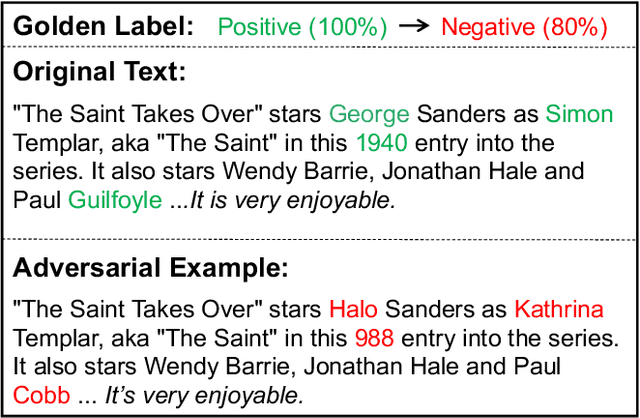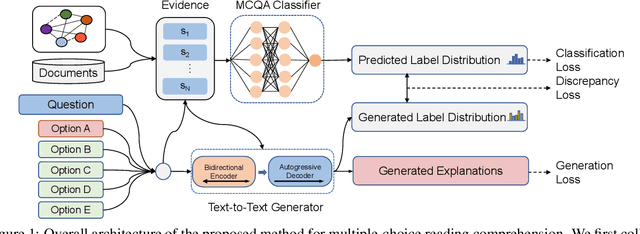Jingcong Tao
Unifying Model Explainability and Robustness for Joint Text Classification and Rationale Extraction
Dec 20, 2021



Abstract:Recent works have shown explainability and robustness are two crucial ingredients of trustworthy and reliable text classification. However, previous works usually address one of two aspects: i) how to extract accurate rationales for explainability while being beneficial to prediction; ii) how to make the predictive model robust to different types of adversarial attacks. Intuitively, a model that produces helpful explanations should be more robust against adversarial attacks, because we cannot trust the model that outputs explanations but changes its prediction under small perturbations. To this end, we propose a joint classification and rationale extraction model named AT-BMC. It includes two key mechanisms: mixed Adversarial Training (AT) is designed to use various perturbations in discrete and embedding space to improve the model's robustness, and Boundary Match Constraint (BMC) helps to locate rationales more precisely with the guidance of boundary information. Performances on benchmark datasets demonstrate that the proposed AT-BMC outperforms baselines on both classification and rationale extraction by a large margin. Robustness analysis shows that the proposed AT-BMC decreases the attack success rate effectively by up to 69%. The empirical results indicate that there are connections between robust models and better explanations.
You Can Do Better! If You Elaborate the Reason When Making Prediction
Mar 27, 2021



Abstract:Neural predictive models have achieved groundbreaking performance improvements in various natural language processing tasks. However, most of neural predictive models suffer from the lack of explainability of predictions, limiting their practical utility, especially in the medical domain. This paper proposes a novel neural predictive framework coupled with large pre-trained language models to make a prediction and generate its corresponding explanation simultaneously. We conducted a preliminary empirical study on Chinese medical multiple-choice question answering, English natural language inference and commonsense question answering tasks. The experimental results show that the proposed approach can generate reasonable explanations for its predictions even with a small-scale training explanation text. The proposed method also achieves improved prediction accuracy on three datasets, which indicates that making predictions can benefit from generating the explanation in the decision process.
 Add to Chrome
Add to Chrome Add to Firefox
Add to Firefox Add to Edge
Add to Edge